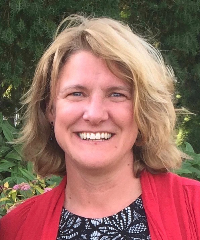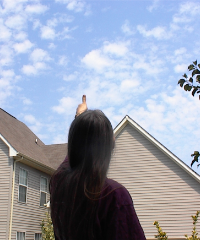RE: Comparing the Observable Seasonal Trends in Aerosol Measurements - Grad - 2020 SRS - 2020 SRS
GLOBE Breadcrumb
- Home >
- 2020 SRS
Open social media sharing options menu
 Share
Share
GLOBE Side Navigation
Site Name
2020 Student Research Symposium (SRS)
Message Boards
- Home
- RE: Comparing the Observable Seasonal Trends in Aerosol Measurements - Grad
0
Project Title: Comparing the Observable Seasonal Trends in Aerosol Measurements in Kingsburg, CA Over 2018-2020
School Name: Kingsburg High School
Teacher Name: Leigh-Ann Olsen
Student Name: Saneh Kahlon, Judith Reyes, Ajmeet Pama Ghuman, Jillian Sasaki
Grade Level: 12
Project Description: Student Research Symposium Aerosol Project
Abstract: Aerosols are particulates, both naturally and anthropogenically produced, capable of affecting the passage of sunlight (Lara). This is measured in the form of Aerosol Optical Thickness readings, or AOT. Typically, an increased presence of particles results in a higher reading. The burning of organic materials, pollen, dust, pesticides, and vehicular emissions can result in the collection of particulates in the air. They can then be transported by the wind over large distances, as was observed in the AOT readings at Kingsburg. Aerosol Optical Thickness (AOT) reading collections were taken and analyzed in order to detect average aerosol trends. The rainy season in the Central Valley tends to be between December and March. Precipitation attracts aerosol particulates, removing them from the atmosphere which contributed to the observations in this study where average AOT readings decreased in the rainy season (Chu).
Atmosphere Protocols: Aerosols, Precipitation
Language: English
School Name: Kingsburg High School
Teacher Name: Leigh-Ann Olsen
Student Name: Saneh Kahlon, Judith Reyes, Ajmeet Pama Ghuman, Jillian Sasaki
Grade Level: 12
Project Description: Student Research Symposium Aerosol Project
Abstract: Aerosols are particulates, both naturally and anthropogenically produced, capable of affecting the passage of sunlight (Lara). This is measured in the form of Aerosol Optical Thickness readings, or AOT. Typically, an increased presence of particles results in a higher reading. The burning of organic materials, pollen, dust, pesticides, and vehicular emissions can result in the collection of particulates in the air. They can then be transported by the wind over large distances, as was observed in the AOT readings at Kingsburg. Aerosol Optical Thickness (AOT) reading collections were taken and analyzed in order to detect average aerosol trends. The rainy season in the Central Valley tends to be between December and March. Precipitation attracts aerosol particulates, removing them from the atmosphere which contributed to the observations in this study where average AOT readings decreased in the rainy season (Chu).
Atmosphere Protocols: Aerosols, Precipitation
Language: English
0
From Dr. Dixon Butler (https://www.globe.gov/web/dixon.butler): Your investigation involved an impressive amount of data collection. Following rain events, how long are AOT values reduced? The Calitoo collects data in three wavelengths; it would have been nice to see these data but the limitations of a poster clearly only portrayed graphs of the derived AOT values. Are the aerosols in Kingsburg of local origin or are they blown into your area from elsewhere? I hope students at Kingsburg High School will extend this data record for years to come. Good work!
0
A minor comment about the way you have cited references, since it confused me. Normally you would write "passage of sunlight (Lara et al, 2012)." As I read it, I thought a team member named Lara had researched that sentence - but you don't have a Lara on the team!
Since precipitation is a key variable in your project, and you have recorded those data, it would be nice to include that information in your graphs.
This is a very nice project that shows how helpful longer term data collection can be. You have done a nice job of highlighting some of the important variables that affect these measurements. Hopefully future teams can continue to build on your dataset to learn evern more about your environment.
Since precipitation is a key variable in your project, and you have recorded those data, it would be nice to include that information in your graphs.
This is a very nice project that shows how helpful longer term data collection can be. You have done a nice job of highlighting some of the important variables that affect these measurements. Hopefully future teams can continue to build on your dataset to learn evern more about your environment.
0
Hi Saneh, Judith, Ajmeet and Jillian,
My name is Emma Burkett – I am a graduate student at the University of New Hampshire working on my MS and PhD studying volcanoes in Alaska. My research primarily involves the use of trace elements in volcanic crystals to understand magma dynamics below active volcanoes, as well as the use of remote sensing data to better understand volcanic activity.
Your understanding of the science behind your project was clearly displayed. I found your data collection and analysis to be well explained and I specifically appreciate how you applied your knowledge of the study area (agricultural influences) to your hypothesis. You were also able to explain outliers in your data as well as the general trends that you saw on your graphs which further displayed your understanding of the subject. You have an impressive project with fantastic scientific conclusions despite communication complications and interrupted data collection.
Well done!
My name is Emma Burkett – I am a graduate student at the University of New Hampshire working on my MS and PhD studying volcanoes in Alaska. My research primarily involves the use of trace elements in volcanic crystals to understand magma dynamics below active volcanoes, as well as the use of remote sensing data to better understand volcanic activity.
Your understanding of the science behind your project was clearly displayed. I found your data collection and analysis to be well explained and I specifically appreciate how you applied your knowledge of the study area (agricultural influences) to your hypothesis. You were also able to explain outliers in your data as well as the general trends that you saw on your graphs which further displayed your understanding of the subject. You have an impressive project with fantastic scientific conclusions despite communication complications and interrupted data collection.
Well done!
0
Hi, my name is Z and I currently work on wetland habitat restoration in Monterey Bay. I received my masters in biological oceanography from UCSC. I enjoyed reading your poster. You have a good grasp of the topic and you organized your poster well. I liked how you included a section on the limitations of your study and the possible error sources. I also liked how you addressed the two outliers in your 2018-2019 dataset. Further, I was very impressed because any questions I had while reading your poster were addressed as I continued looking through your work. For next time, you could summarize your text more or substitute figures for concepts, as it is a bit wordy. Excellent work!











